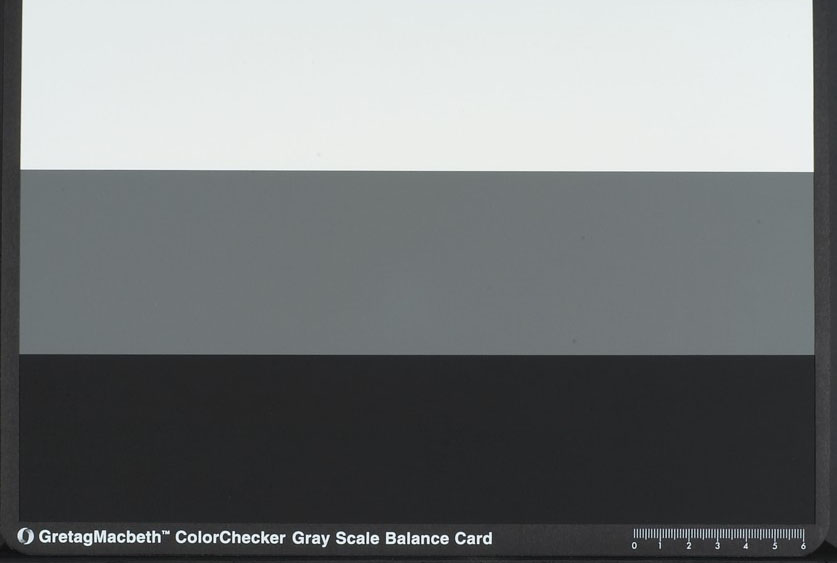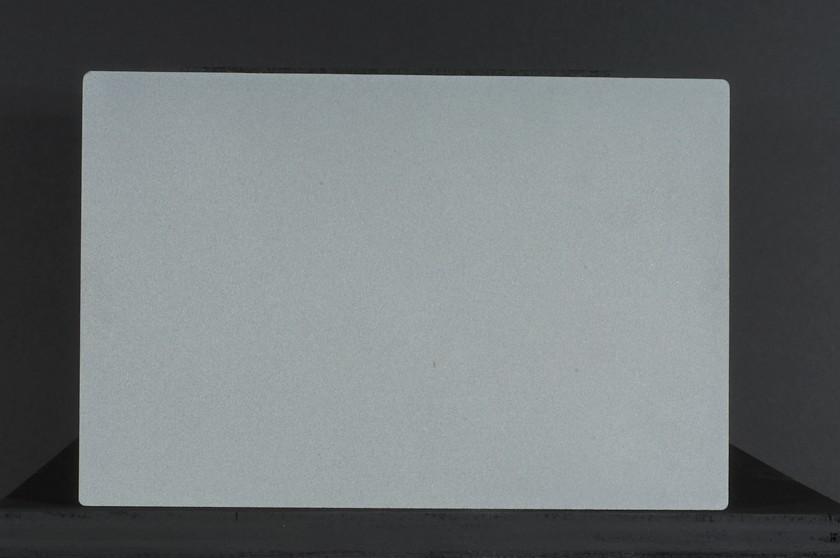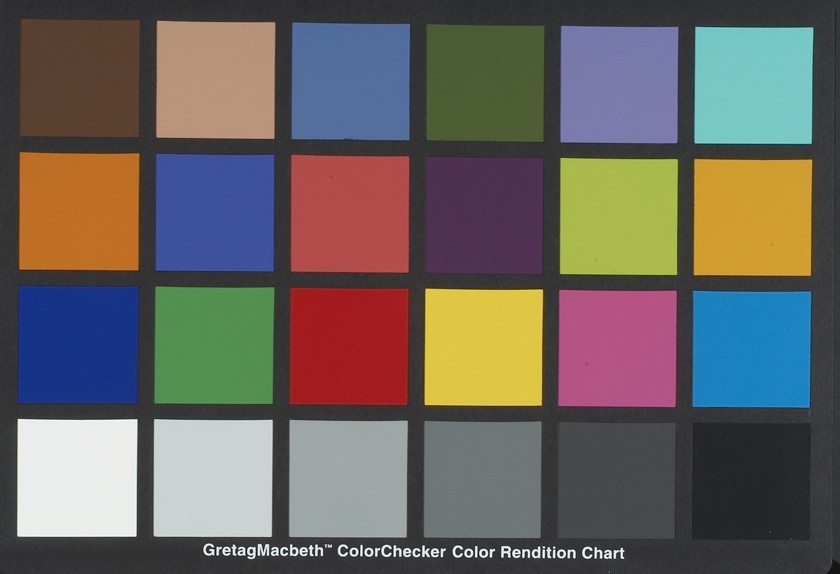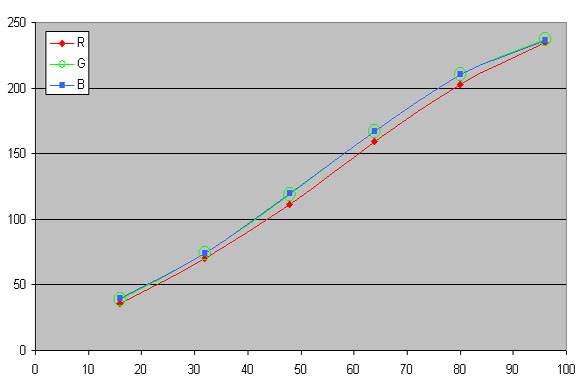|
Introduction
This report is the result of measurement discrepancies found during evaluation
of a system to produce accurate camera profiles. In the process of verifying the setup I discovered
a non-linearity problem. Some difference between the channels is to be expected but not
a sharp change in only one of the channels. I do not
know if this problem is only occurring in my test camera or if I am seeing a basic
problem that are common to many users. As I learn more, I will update this article.
It will be very helpful if readers can provide feedback on these problems.
Equipment and Setup
|
Camera
|
Nikon D2H SLR
|
|
Lens
|
Nikon AF NIKKOR 50mm F 1.8 ”prime”
|
|
White Standard
|
Optical standard traceable to NIST, 99% reflective from 400 to 900nm
|
|
Black Standard
|
An opto-mechanical design with light traps and non-reflective internal surfaces”
|
|
Light Source
|
Bowens Espirit 500 UV coated monolights with small 150mm reflectors
|
|
Computer
|
Custom built PC running Windows-XP
|
Measurements and Data
For information about the "Perfect" black and white standards and measurements
see the related report at: www.vinland.com/contrast.html
The 50mm diameter White Standard was
surrounded with a 150mm by 150mm white painted frame. There was a black
background completely filling the rest of the picture. The measurements were
taken at night to avoid bright daylight conditions. The target was illuminated
with two strobes that were positioned at a 45 degrees angle to the target, 1.5 m
from the target and the power setting was ¼.
The camera’s aperture was adjusted using
the camera’s blinking high light warning. It was set to just blink on the
White Standard. The result was F18. Then the aperture was changed to F20
before taking the pictures to make sure that no data was clipped. The lights
and settings were kept identical for the rest of the pictures. Speed and
sensitivity was set at ISO 200 @ 1/125 second. The camera sensor to target
distance was 850mm. The viewfinder shutter was closed for each picture to
avoid any light leakage.
The pictures were taken in NEF format and
converted to reduced size jpg and Tiff images in Phase One’s Capture 1 software
using AdobeRGB workspace and white balancing on the White Standard and applying
that setting to all remaining pictures. They were slightly cropped.
All measurements were done in PhotoShop CS on
the Tiff samples and after a 10 pixel Gaussian blur was applied to average any
possible pixel to pixel variation. The calculated average of the RGB values
were used for the percentage calculations.
The White standard was measured and that
value of 243/243/243 was used for the rest of the measurements as the 100%
reference value.

|
#1. GretagMacbeth Gray Scale Balance Card
|
|
White
|
232/ 236/ 235
|
96.4%
|
|
Gray
|
111/ 117/ 117
|
47.3%
|
|
Black
|
37/ 38/ 38
|
15.5%
|

|
#2. DGC-150 Gray Card from Robin Myers Imaging
|
|
Gray
|
156/ 164/ 165
|
66.5%
|

|
#3. GretagMacbeth ColorChecker
|
|
White
|
235/ 237/ 236
|
97.1%
|
|
Gray, Light
|
159/ 167/ 167
|
85.5%
|
|
Gray, Light/Medium
|
203/ 210/ 210
|
67.6%
|
|
Gray, Medium
|
111/ 119/ 120
|
48.0%
|
|
Gray, Dark
|
70/ 74/ 74
|
29.9%
|
|
Black
|
36/ 39/ 40
|
15.8%
|

|
#4. RGB Data Chart from the ColorChecker
|
The measured RGB values were plotted against a normalized X-axis of 16 to 96.
Either the Green & Blue channels are compressing at the high end or the Red channel is peaking.
Summary
There is a significant change in white balance between the
white targets and the gray ones. It appears that something is non-linear in
at least one of the channels. I do not know if that is happening in the camera or the subsequent
conversion from NEF to a picture. I do trust the White Standard and it agrees
well with the ColorChecker white patch. Similarly, all the gray cards show a
shift in white balance so I do not believe that it is caused by a defective
gray card.
No further work has been done at this time to resolve this error
but as time permit, I will do some further tests to understand the problem
better.
This problem ought to significantly affect the accuracy of camera profiling.
Further Testing
My next step in the quest for accuracy is
to finish the testing of an optically correct illumination system
to be used while creating camera profiles and to write a description of profiling procedure.
There are so many variables in profiling cameras
and they often get mixed up or misunderstood. As a consequence there are claims that it does not work
well to profile a camera or that it is useless. I think that is because the
variables are often not sufficiently controlled and the result is in some cases poor.
Bertho Boman
Vinland Corporation
11600 NW 20th Street
Fort Lauderdale
FL 33323
(954) 475-9093
Email: boman33 at vinland dot com
www.vinland.com
|



